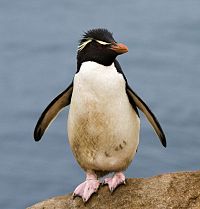
Imidacloprid slows the development of preference for rewarding food sources in bumblebees (Bombus impatiens)
Sign Up to like & getrecommendations! Published in 2017 at "Ecotoxicology"
DOI: 10.1007/s10646-017-1883-3
Abstract: Bee pollination is economically and ecologically vital and recent declines in bee populations are therefore a concern. One possible cause of bee declines is pesticide use. Bumblebees exposed to imidacloprid, a neonicotinoid pesticide, have been… read more here.
Keywords: bumblebees exposed; foraging trips; preference; exposed imidacloprid ... See more keywords

Anosmia impairs homing orientation but not foraging behaviour in free-ranging shearwaters
Sign Up to like & getrecommendations! Published in 2017 at "Scientific Reports"
DOI: 10.1038/s41598-017-09738-5
Abstract: Shearwaters deprived of their olfactory sense before being displaced to distant sites have impaired homing ability but it is unknown what the role of olfaction is when birds navigate freely without their sense of smell.… read more here.
Keywords: foraging trips; anosmia impairs; orientation foraging; homing orientation ... See more keywords

Temperature as a constraint on the timing and duration of African elephant foraging trips
Sign Up to like & getrecommendations! Published in 2020 at "Journal of Mammalogy"
DOI: 10.1093/jmammal/gyaa129
Abstract: In arid and semiarid environments, water is a key resource that is limited in availability. During the dry season, perennial water sources such as water pans often are far apart and shape the daily movement… read more here.
Keywords: foraging trips; water; timing duration; temperature constraint ... See more keywords